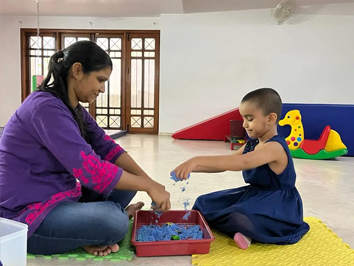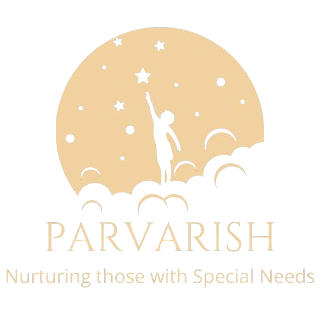
What is Occupational Therapy?
OT stands as a treatment method that enhances your ability to accomplish everyday tasks. Occupational therapy provides instruction about moving safely through your surroundings while demonstrating how to handle various tools for activity participation. Occupational therapy promotes independence and self-sufficiency. Ordinary occupational therapy practice does not depend on your ability to work or perform jobs. Occupation serves as a medical term providers apply to describe your activities regardless of their nature.
Who needs Occupational Therapy?
Occupation exists for all humans including children. Children have three main occupations including development, academic learning and pursuing new skills with activities. However physical or cognitive or sensory impairments sometimes prevent kids from learning these essential life skills. Children struggle with processing sensory information while also needing help developing fine and gross motor skills and visual-perceptual ability and similar capabilities.
Occupational therapy services deliver major beneficial results for children who receive treatment. Occupational therapy succeeds in teaching basic life skills to students who face challenges with bathing and tooth-brushing and meal preparation and clothing selection. The treatment method excels at advancing fine motor abilities while building hand-to-eye coordination
The core aspect of therapy entails identifying the origins of developmental delays that affect social development alongside personal care, hand coordination and self-care and cognitive skills. In the therapeutic care provided by Parvarish OT specialists, children acquire necessary life competencies which prepare them to develop into well-rounded and healthy adults.
Our purpose demands developing fine motor abilities to allow children handle and release objects including balls.Perform daily tasks. It can teach you how to navigate your surroundings or how to use various equipment to securely engage in your activities.
Occupational therapy enables patients to live as independently as possible.The occupation in occupational therapy doesn’t necessarily mean your ability to work or do your job. Occupation is a general term providers use to mean any of your daily tasks.
What Occupational Therapy Do ?
Develop children's fine motor abilities so that they can grip, hold, and release things such as toys, balls, etc.. The therapy enables children to master their handwriting skills while also building proficiency at operating computers. Health providers assist clients in creating abilities and approaches which help them face hurdles while performing tasks.
Children need help to develop essential daily life abilities that include brushing their teeth and eating and bathing properly.
Proper eye-hand coordination development helps students copy written information from blackboards or electronic screens while allowing them to perform tasks involving object throwing and catching and hitting a ball effectively.
Occupational therapy enables children to control their frustration and disappointments while building their abilities for good social conduct.
Occupational therapist aims to reduce or eliminate disabilities in individuals and children while helping them maintain their daily life autonomy. The therapy profession develops individualized solutions to help clients reach their highest capabilities in addressing particular problem areas
Individualized Approach: Occupational therapy understands all individuals possess distinct personality characteristics and difficulties along with independent life objectives. By applying a client-focused model therapists craft personalized treatment methods which match individual requirements while evaluating patients' physical wellbeing alongside emotional connections and environmental circumstances.
Holistic Well-being: Occupational therapy supports the assessment of individuals by evaluating their whole being through treatment which combines physical strategies alongside emotional support and interactions with social networks and environmental aspects for comprehensive well-being. Therapists assess comprehensive life quality before directing individuals to discover activities which yield purpose and happiness as well as life satisfaction.
Occupational Therapy generally improve the following problems:
- Sensory Processing Skills
- Self-regulation
- Independence
- Fine Motor Skills
- Gross Motor Skills
- Visual Perception
- Memory and Cognition
- Handwriting Difficulties
- School Readiness
- Play
At Parvarish we offer a comprehensive approach to physical, cognitive or emotional difficulties that empower individuals to overcome through occupational therapy in Delhi.
What Parvarish do:
Specialized pediatric occupational therapy services at Delhi will help your child reach their maximum potential. The Occupational Therapy department at Parvarish focuses on helping children discover abilities needed for accomplishing daily activities.
At our Parvarish Occupational Therapy Clinic experienced therapists help children alongside their families to build independence while enhancing daily life functions for better quality of living.
The key differences between occupational therapy services (OT) and physical therapy services (PT).
Occupational therapy alongside physical therapy works to enhance body movement quality or protective abilities. Their objectives represent the fundamental distinction between these fields of practice
Healing practices of occupational therapy serve to help individuals both perform their daily activities and achieve maximum independence in their lives. This profession works to help you achieve daily tasks while protecting your ability to do preferred activities safely.
Uncommon symptoms from health problems or difficulties moving normally require physical therapy for treatment. A physical therapist creates custom exercises and stretches to help patients develop their strength while doing flexibility exercises.
Occupational and physical therapy frequently share overlapping areas so patients may require simultaneous treatment with each form. Health objectives remain common between these professions however their specific guidance methods for safety and wellness creation differ from each other
